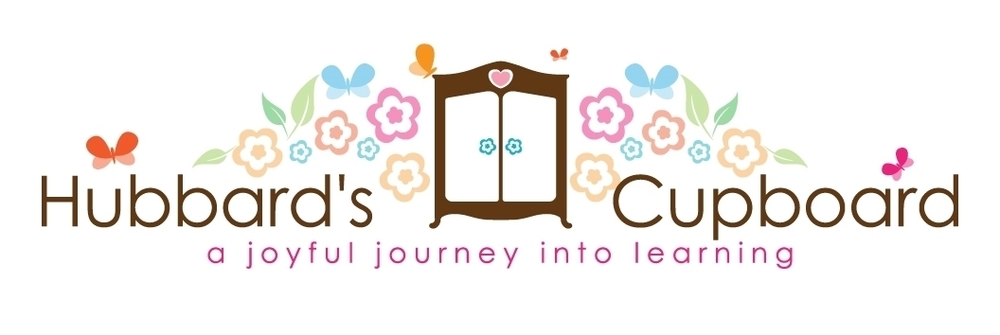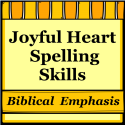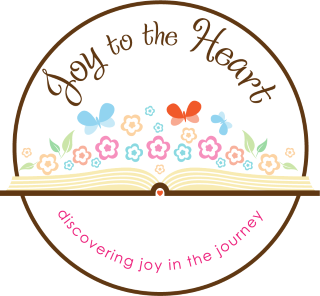The Pilgrims' First Thanksgiving
(and other Thanksgiving stories)
The Pilgrim's First Thanksgiving by Ann McGovern
On The Mayflower by Kate Waters
Pilgrim Children Had Many Chores by Gina Lems Tardif
Did You Know? by Sandi Hill
Thanksgiving Is For Giving Thanks by Margaret Sutherland
The Pilgrims' First Thanksgiving
Reading the Story:
- Review with students the November calendar. Have students name the holiday that occurs in this month. Does it occur at the beginning, middle, or end of the month? What day of the week is Thanksgiving on?
- Ask students to orally share some things that they do on Thanksgiving Day.
- Ask students why they think we celebrate Thanksgiving.
- Explain to students that Thanksgiving has been celebrated for many, many years in our country and that we are going to be reading and learning about the very first Thanksgiving.
- Ask students to orally share what think they already know about Thanksgiving a long time ago.
- Then have each student share one question or thing that they would like to find out about the first Thanksgiving. Write the students' questions on a large piece of chart paper. For example, "What food did they eat at the first Thanksgiving?" (Brad). Explain to students that during the next two weeks they will be trying to find the answers to their questions.
- Read and discuss the story over several days - stopping to go more in depth with the companion stories at key points - voyage to America, Pilgrim life at Plymouth Plantation, and help from the Native Americans.
- At the end of the Thanksgiving study, make sure to have students illustrate and use Kid Writing in order to share what they have learned!
Extensions:
- Use 'Pilgrim, Pilgrim' for shared reading. Students can echo you when you read or they can choral read – all together or boys asking girls. Also, students can round up all the rhyming words for 'see', locate all of the popcorn words – (what,do,you,see,I,a,the), and mask certain letters. Have students make a Pilgrim pointer by coloring a small Pilgrim clip art and attaching it to a Popsicle stick.. Students can then take their booklet home to reread with family members!
Pilgrim, Pilgrim
(by M. Hubbard)
Pilgrim, Pilgrim, what do you see?
I see the king refusing my plea.
Pilgrim, Pilgrim, what do you see?
I see the Mayflower ready for sea.
Pilgrim, Pilgrim, what do you see?
I see a new land to set me free.
Pilgrim, Pilgrim, what do you see?
I see a hard winter, tough as can be.
Pilgrim, Pilgrim, what do you see?
I see a green bud on a spring tree.
Pilgrim, Pilgrim, what do you see?
I see an Indian helping me.
Pilgrim, Pilgrim, what do you see?
I see corn growing 1, 2, 3!
Pilgrim, Pilgrim, what do you see?
I see praise, for thankful are we!
Pilgrim Pilgrim Emergent Reader Booklet
(with all black and white clipart)
Printable Pilgrim, Pilgrim booklet
(No clip art :You may wish to have students cut and glue clip art, draw your own, or have students illustrate.)
- Have teams of students work together to create a class mural of either the Mayflower voyage, the Pilgrims, or the Native Americans! Label the ship, supplies, items they use, distinct pieces of clothing, etc.
- Retell the story of the First Thanksgiving. I made a big book in which some pieces are movable for during the retelling. Other teachers at our K center draw the account on large chart paper as students watch and listen and they retell the story.
- Learn more about the Pilgrims' Harvest Feast - especially the types of food they ate! Then, hold a Mock Thanksgiving Feast! (Our K Center does this each year. Each class makes one dish to share with the other classes. The students can choose to wear their Pilgrim hats and bonnets or dress as a Native American. Large rolls of brown paper are laid out on the gym floor to serve as tables. It is a great experience for the students!)
- Sing 'The First Thanksgiving'
The First Thanksgiving
(Tune:The Muffin Man )
The Pilgrims came to America
America, America.
The Pilgrims came to America
a long, long time ago.
They sailed on the Mayflower
the Mayflower, the Mayflower.
They sailed on the Mayflower
a long, long time ago.
They made friends with the Indians
The Indians, the Indians.
They made friends with the Indians
a long, long time ago.
They planted seeds. The corn grew tall
The corn grew tall. The corn grew tall.
They planted seeds. The corn grew tall
a long, long time ago.
They had a great Thanksgiving feast
Thanksgiving feast, Thanksgiving feast.
They had a great Thanksgiving feast
a long, long time ago.
Ideas to use with Companion Stories
On the Mayflower
- Review who the Pilgrims were and why they were leaving their homes to venture to a new land
- Using a globe and amap, show students where the Pilgrims left and where they were headed in America.
- Ask students to consider what they would take with them on a trip to a new world. There would be no stores in the new world to buy the things they usually have. Show them a box and tell them that all their family couldbring would have to fit inside of it. Brainstorm a list of wants and needs that could fit inside of the box. Have students write and illustrate what they would take with them on their journey.
- Read portions of If You Sailed on the Mayflower by Ann McGovern in order to learn more about life on board the Mayflower.
- Construct a small, paper Mayflower
- In the gym or outside, measure out how big the Mayflower really was (about 90 feet long).
Pilgrim Children Had Many Chores
- Before reading, review with students what they know so far about the life of the Pilgrims on their Mayflowervoyage.
- Explain that life was very difficult for the Pilgrims in America and that everyone, including the children, had to work hard.
- Ask students to share ways they think the Pilgrim children could have helped their families. How do they help their own families?
- Introduce the title, author, and illustrators. Students will be intrigued to find out that first grade children constructed the pictures in this published book! Read aloud each page, taking time for students to look closely at the pictures and for explainingthe concepts of how and why they were churning butter, mucking a garden, bundling wheat, getting water from a well, etc.
- Enlarge clip art of a Pilgrim boy and girl. Use interactive writing to label their clothes. (Girls: coif, apron, pocket, shoe, petticoat, waistcoat. Boys: hat, breeches, doublet, stockings, shoes) Talk about how they are similar and different to clothes that we wear today.
- Read and discuss Sarah Morton's Day and Samuel Eaton's Day, both by Kate Waters, in order to learn more about the daily life of Pilgrim children.
Pilgrim Boys (Review Samuel Eaton's Day) - help build house, hunt for food, make wooden pegs (nails), gather wood for the fire, gather crops from the fields
Pilgrim Girls (Review Sarah Morton's Day) - cook and serve meals, wash clothes, make soap, make candles, feed the chickens, milk the goats, muck the garden, make spices, churn butter, polish brass
Both - keep predators from the corn fields, shell corn, cook turkey on a spit, make mattresses from pine needles, feathers, or corn husks, gather thatch for the roof, dig for clams, get water from the spring
- In order to help students learn about the items Pilgrims used long ago , bring in a box filled with the following items. Use them to compare with the items Pilgrim children would have used.
Relate to These Items From the Past
Indian corn (ground to make corn meal)
shells
wooden trencher
wooden/ leather mug
made own
made own candles
Bible and hornbook
girl's coif and boy's hat
outside games (like Nine Men's Morris)
Inside the Box (Items From Today)
box of cornbread mix
spoon
plate
glass cup
soap
light bulb or small lamp
story book
baseball cap
electronic game
- Make Pilgrim Portraits (from the TLC Fall book)
- Make wearable Pilgrim Hats and Bonnets Girl Pilgrim Bonnets
Did You Know?
- Stress that the Wampoanoags were only one tribe of many different tribes of Indians that lived in the area when the Pilgrims arrived. Did You Know? will show them some of the things the Native Americans used in their daily life. Make sure to explain that not all of these were ways the Wampanoags lived.
- Read books about the Wampanoags such as The Wampanoags by Alice Flanagan in order to learn more about their tribe. (hunters and farmers, used canoes and lived in wigwams - both made from trees, etc.)
- Read books such as Tapunum's Day and Giving Thanks: The 1621 Harvest Feast both by Kate Waters in order to learn about Indian life, how they helped the Pilgrims, and how they were similar/different from Pilgrims.
- Create a class book of what students have learned about the Wampanoags. Each page could read 'Did you know that _______? It's true!"
Thanksgiving is For Giving Thanks
- Ask students why they think the Pilgrims' feast was a time of Thanksgiving. What were the Pilgrims' thankful for? Are they thankful today for things in their own life?
- Tell students that they are going to hear a story about children who share things that they are thankful for.
- Show students the cover of the book. See if the students can figure out the title of the story by thinking about the context of what we were talking about, finding the popcorn words, and breaking the longer words into chunks.
- Take a picture walk. What might the boy/girl in each spread be saying he/she is thankful for? "I am thankful for..." Encourage the students to look closely at each picture in order to figure out why the child is thankful for that particular item or person.
- Read the story aloud, letting students chime in on the repeated phrase 'I am thankful for' . Have students listen to confirm why the children were thankful.
- Make an 'I Am Thankful' predictable class chart- Discuss with students things for which they are thankful.. Then write "I am thankful for ____." sentences. Start by writing your sentence first "I am thankful for my class." (Mrs. Hubbard) Write each sentence on chart paper, writing their name at the end of the sentence. Reread each sentence tracking the print. Cut apart one sentence and let students 'Be the Words' and organize themselves into the correct order. Read together. Model how to place each word in the correct order at the top of the page and then to draw a picture of them doing what the sentence says. Let each student complete their own sentence and drawing. Then, bind all student pages to make a class book to read again and again!
- Write and send thank you letters to community helpers, grandparents, etc.
- Have students complete an I Am Thankful Family Project and share with the class what their family is thankful for!
- Make and read 'Today We Give Thanks' (a reproducible booklet from 25 Holiday and Seasonal Emergent Reader Mini-Books by Maria Fleming; Scholastic, 1998). Look for rhymes, easy repetitive words (today, we, give, thanks, for), and words that start with 'Tt' or 'Ff'. Write the words of the story on sentence strips or print them from the computer. Cut the sentence apart into individual words. Then, let students rearrange the words to match the text in their booklet!
- Sing 'We Are Thankful.'
We Are Thankful
(Tune: Frere Jacques')
We are thankful. We are thankful,
for our families, for our families.
On Thanksgiving Day,
You will hear us say
Thank you, thank you!
(Repeat, letting students insert what they are thankful for.)
Related Cross Curricular Activities
Math:
1) Play Turkey Number Bingo
2) Cut apart, color, and put together a turkey, Pilgrim girl, or cornucopia puzzle (From Teacher Created Materials, 1986 Holiday Puzzles)
3) Read, sing, and act out 'One Little, Two Little, Three Little Pilgrims'
4) Recall and brainstorm food items that the Pilgrims might have ate at Thanksgiving. Have students graph what they think their favorite Thanksgiving food would have been!
Science: Read Corn is Maize by Aliki. Study Indian corn -Estimate and count kernels. Conduct a growing experiment by placing an ear of corn in water, an ear in soil, and an ear in an empty container. Then make oral and written observations about the changes. (Idea is from 'What a Corny Life', 1998 AIMS Education Foundation)
Literacy:
1) Gobble up the Words! Write popcorn/sight words on two sets of cards from one of the stories and place them in a cooking pot. Set out plates (one for each set of words). Students read and find the words that are identical and then place them on the plates.
2) Have students write the popcorn word 'in' on the blank lines of the reproducible booklet 'In Went' . Reread. Students can add additional pages or you can use the story frame to let students create their own booklets using foods that they ate at the mock feast!
(from Sight Word Books Level 1 by Jordano and Corcoran; Creative Teaching Press, 2001)
3) 'Turkeys by the …' Chart
(Corresponding reproducible booklet can be found in Seasonal Object Rhymes by Jean Warren, Totline Publications: 1998)
4) As a class, read the 'Thanksgiving Day' chart. Have a picture and the word card written for the following (turkey/roast, pumpkin/pie, cranberry/sauce, bread/stuffing, peanut, peanut butter, etc.) Let students insert a food item from the first blank and find the corresponding item to place in the second blank. Then, let students make their own mini chart to take home and reread.
Thanksgiving Day
(from Building Literacy With Interactive Charts by Schlosser and Phillips; Scholastic , 1992)
(Tune Farmer in the Dell)
The ____ ran away
Before Thanksgiving Day.
He said, "They'll make a ____ of me
If I decide to stay!
5) Sort pictures of Thanksgiving symbols by how many syllables are in each (Pilgrim, Mayflower, Indian, turkey, cornucopia, family. feast, pumpkin, pie, squash, parade, football, rock)
6) Sing 'Turkey Talk' and insert Thanksgiving related words. Have students listen and write the letter they hear on small wipe off boards
Turkey Talk
(from Fall Phonemic Awareness Songs and Rhymes by Jordano; Creative Teaching Press)
Tell me the first sound that you hear,
That you hear.
That you hear.
Tell me the first ( last, middle) sound that you hear in
Turkey, turkey, turkey.
Art:
1) Form hand print turkeys
2) Create coffee filter turkeys
Directions
- Have students color one coffee filter with markers. (The more color, the brighter the feathers will be.)
- Fold the colored filter in eighths and dip just the tip into water. (Watch as the color mixes!)
- Set the wet filter aside to dry.
- Trace and cut out a turkey body onto brown paper.
- Add eyes, beak, and feet to the turkey.
- After the filter dries, attach the filter to the turkey body.
- Attach speech bubbles to the turkeys, letting students fill in the blank. "Eat ______!"
3) Construct tabletop turkeys (From Copycat Nov/Dec. 1994 )
Social Studies: cooperation and helpfulness; wants vs. needs
Movement:
'Five Fat Turkeys'
Five fat turkeys are we.
We slept all night in a tree.
When the cook came around,
we couldn't be found and,
that's why we're here you see!
Oh, five fat turkeys are we.
We slept all night in a tree.
It sure does pay on Thanksgiving Day
to sleep in the tallest tree!
Turkey Trot
(Tune: Hokey Pokey)
You put your right wing in.
You put your right wing out.
You put your right wing in,
and you shake it all about.
You do the turkey trot
and you turn yourself around.
That's what it's all about!
Additional verses:
Left wing,
Drumsticks,
Stuffing (Stomach)
Wattle (Head)
Tail Feathers (Bottom)
Turkey Body
Related Read Aloud Stories/Poems:
Focus Story: The Pilgrim's First Thanksgiving by Ann McGovern
Companion Stories:
Thanksgiving Is For Giving Thanks by Margaret Sutherland
On The Mayflower by Kate Waters
Pilgrim Children Had Many Chores by Gina Lems Tardif
Did You Know? by Sandi Hill
Sarah Morton's Day: A Day in the Life of a Pilgrim Girl by Kate Waters
Samuel Eaton's Day: A Day in the Life of a Pilgrim Boy by Kate Waters
Tapenum's Day : A Wampanoag Indian Boy in Pilgrim Times by Kate Waters
Feeling Thankful by Shelley Rotner
Story of the First Thanksgiving, The by Elaine Raphael
One Little Two Little, Three Little Pilgrims by B.G. Hennessy
Three Young Pilgrims by Cheryl Harness
Alligator Arrived With Apples : A Potluck Alphabet Feast by Crescent Dragonwagon
Story of Thanksgiving, The by Nancy Skarmeas
Thanksgiving by Alana Willoughby
The First Thanksgiving Day: A Counting Story by Laura Melmed
First Thanksgiving, The by Linda Hayward
Thanksgiving Is… by Louise Borden
First Thanksgiving, The by Garnet Jackson
If You Sailed on the Mayflower by Ann McGovern
Off to Plymouth Rock by Dandi Daley MacKall
Story of the Pilgrims, The by Katharine Ross
Thanksgiving Day byGail Gibbons
Giving Thanks: The 1621 Harvest Feast by Kate Waters
Daily Life in the Pilgrim Colony 1636 by Paul Erickson
Squanto and the Miracle of Thanksgiving by Eric Metaxas
The Wampanoags by Alice Flanagan
Corn is Maize by Aliki
I Know an Old Lady Who Swallowed a Pie by Judith Schachner
Eating the Plates: A Pilgrim Bokk of Food and Manners by Lucille Recht Penner
Homes in the Wildreness: A Pilgrim's Journal of Plymouth Plantation in 1620 by William Bradford (edited by Margaret Wise Brown)
Gobble: The Complete Book of Thanksgiving Words by Lynda Graham Barber
Turkeys, Pilgrims, and Indian Corn: The Story of the Thanksgiving Symbols by Edna Barth
Colonial Kids: An Activity Guide to Life in the New World by Laurie Carlson
Related Resources:
Inside Hubbard's Cupboard-
Thanksgiving Printable Booklet
The Pilgrim Story
The Thank Him Tree (Names of God Leaf Printables)
The Thank Him Tree
20 Days of Thanks
20 Days of Thanks Booklet
20 Days of Thanks Booklet - tighter lines
20 Days of Thanks Booklet - single lines
20 Days of Thanks Booklet - no lines
Thanksgiving Activity Countdown
Thanksgiving Activity Cards - no numerals, pick and choose which activities to incorporate,(activities and wording based off of the ideas at 24/7Moms)
Thanksgiving Countdown Cards- numerals only, write in your own activities
Psalm 103 - a memorization and meditation booklet!
Outside Hubbard's Cupboard-
Pilgrim Unit - Seven lessons from TeacherVision
Thanksgiving: A Celebration of Gratitude - very detailed plans from Teacher Link
The First Thanksgiving - Scholastic resource page (a great find!)
It's Thanksgiving - Poetry book unit from Webbing Into Literacy
Feast For Ten - Book unit from Webbing Into Literacy
Thanksgiving: Focus on Clothing - mini unit for grades 1-3
Wampanoag History - information about the Wampanoags
Thanksgiving Printables - from ABC Teach
Thankful Tree and Coloring Sheets - from Ministry to Children
Plimoth on the Web - Plymouth Plantation Living History Museum
Pilgrim Hall Museum - facts and photos of artifacts























